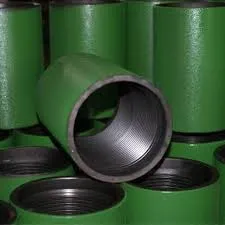- Afrikaans
- Albanian
- Amharic
- Arabic
- Armenian
- Azerbaijani
- Basque
- Belarusian
- Bengali
- Bosnian
- Bulgarian
- Catalan
- Cebuano
- Corsican
- Croatian
- Czech
- Danish
- Dutch
- English
- Esperanto
- Estonian
- Finnish
- French
- Frisian
- Galician
- Georgian
- German
- Greek
- Gujarati
- Haitian Creole
- hausa
- hawaiian
- Hebrew
- Hindi
- Miao
- Hungarian
- Icelandic
- igbo
- Indonesian
- irish
- Italian
- Japanese
- Javanese
- Kannada
- kazakh
- Khmer
- Rwandese
- Korean
- Kurdish
- Kyrgyz
- Lao
- Latin
- Latvian
- Lithuanian
- Luxembourgish
- Macedonian
- Malgashi
- Malay
- Malayalam
- Maltese
- Maori
- Marathi
- Mongolian
- Myanmar
- Nepali
- Norwegian
- Norwegian
- Occitan
- Pashto
- Persian
- Polish
- Portuguese
- Punjabi
- Romanian
- Russian
- Samoan
- Scottish Gaelic
- Serbian
- Sesotho
- Shona
- Sindhi
- Sinhala
- Slovak
- Slovenian
- Somali
- Spanish
- Sundanese
- Swahili
- Swedish
- Tagalog
- Tajik
- Tamil
- Tatar
- Telugu
- Thai
- Turkish
- Turkmen
- Ukrainian
- Urdu
- Uighur
- Uzbek
- Vietnamese
- Welsh
- Bantu
- Yiddish
- Yoruba
- Zulu
Durable Stainless Steel Threaded Coupling for Reliable Plumbing and Mechanical Connections
Understanding Stainless Steel Threaded Couplings A Comprehensive Guide
Stainless steel threaded couplings are essential components in many industrial and commercial applications, serving as integral connectors for pipes and hoses. With their array of benefits, including corrosion resistance, durability, and strength, these couplings are widely favored in various sectors, from plumbing to construction and even in chemical processing.
What is a Threaded Coupling?
A threaded coupling is a type of fitting used to connect two pipes or hoses together. It features internal threads that allow it to be screwed onto the external threads of the pipes it is joining. This simple yet effective design facilitates secure connections, ensuring that liquids or gases flow seamlessly through the pipes without leakage. The use of stainless steel in these couplings enhances their performance and longevity, making them a popular choice in harsh environments.
The Advantages of Stainless Steel
Stainless steel is an alloy that primarily consists of iron, carbon, and chromium, which gives it its distinctive properties. One of the most important attributes of stainless steel is its resistance to corrosion. This makes it ideal for both indoor and outdoor applications, especially in environments where humidity or exposure to moisture is common. Businesses often choose stainless steel components because they require less maintenance and have a longer service life compared to galvanized or plastic alternatives.
Another significant advantage of stainless steel threaded couplings is their strength. They can withstand high pressures, making them suitable for high-stress applications. Additionally, stainless steel is less likely to warp or degrade over time, ensuring the integrity of the connection.
Applications of Stainless Steel Threaded Couplings
Stainless steel threaded couplings are used in various industries. In the plumbing sector, they connect water pipes, facilitating the efficient flow of water in residential and commercial buildings. In the oil and gas industry, these couplings are crucial for connecting pipes that transport crude oil, natural gas, and other petroleum products. With the increasing focus on sustainability and environmental safety, stainless steel's durability and resistance to chemical reactions make it an excellent choice for transporting hazardous materials.
stainless steel threaded coupling

Moreover, in food and beverage applications, stainless steel’s hygienic properties are paramount. These couplings help maintain sanitary conditions, ensuring that food products remain uncontaminated during transportation and processing.
Selecting the Right Stainless Steel Threaded Coupling
When selecting stainless steel threaded couplings, it’s essential to consider several factors
- Material Grade The most common grades used are 304 and 316 stainless steel. While 304 offers excellent corrosion resistance for most applications, 316 provides enhanced protection against salty or acidic environments and is often used in marine applications.
- Size Couplings come in various sizes to accommodate different pipe diameters. Ensuring the correct size is crucial for a tight and secure fit.
- Thread Type Coarse and fine threads are available for various applications. Understanding the type of threads that suit your pipes ensures compatibility and functionality.
- Pressure Ratings Different couplings have different pressure ratings. It’s essential to choose a coupling that can withstand the specific pressure requirements of your application.
Conclusion
Stainless steel threaded couplings are vital components that facilitate the safe and efficient flow of liquids and gases in numerous applications. Their durability, strength, and resistance to corrosion make them an investment worth considering. As industries continue to evolve, the demand for reliable and high-performance fittings like stainless steel threaded couplings will only grow, supporting innovative solutions for modern challenges. Whether for residential plumbing, industrial needs, or food and beverage processing, selecting the right coupling can make all the difference in achieving seamless and lasting connections.
-
Tubing Pup Joints: Essential Components for Oil and Gas OperationsNewsJul.10,2025
-
Pup Joints: Essential Components for Reliable Drilling OperationsNewsJul.10,2025
-
Pipe Couplings: Connecting Your World EfficientlyNewsJul.10,2025
-
Mastering Oilfield Operations with Quality Tubing and CasingNewsJul.10,2025
-
High-Quality Casing Couplings for Every NeedNewsJul.10,2025
-
Boost Your Drilling Efficiency with Premium Crossover Tools & Seating NipplesNewsJul.10,2025







